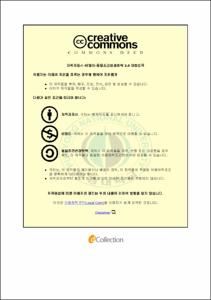자연산 및 양식산 내수면 수산물의 미네랄 함량 분석 및 영양평가
- Abstract
- Analysis of Mineral Content and Nutritional Evaluation
of Wild and Cultured Inland Water Fishery Products
Hyeon-Jin Gye
Department of Food Science and Technology, Graduate School,
Pukyong National University
Abstract
This study is performed to evaluate food quality of inland water fishery product: catfish (Silurus asotus), Korean bullhead (Pseudobagrus fulvidraco), japanesese eel (Anguilla japonica), curcian carp (Carassius auratus), carassius cuvieri (Carassius cuveri), leather carp (Cyprinus carpio nudus) and rainbow trout (Onchorhynchus mykiss). Proximate composition, fatty acid composition, total amino acid and mineral contents of fish muscle were measured.
There was significantly difference in the proximate composition of the inland water fish between season (P<0.05), especially moisture and crude lipid content. Moisture contents was ranged from 63.34 g/100 g to 80.44 g and lipid contents was ranged from 0.85 g/100 g to 80.44 g/100 g.
The elements were in inverse proportion to each other in all fish groups.
Protein contents was ranged from 63.34 g/100 g to 80.44 g/100 g. Ash contents was contained in a large percentage of fish, accounting for 0.5-2 g/100 g.
The composition of fatty acid showed a little difference by fishes. Major component of saturated fatty acid was palmitic acid(C16:0) and major component of monounsaturated fatty acid was oleic acid(C18:1). The composition eate of DHA, EPA and Lonoleic acid(C18:2) was the higest in polyunsaturated fatty acid. No differences were found in composition of fatty acid by season. However, there was dofference between wild fish and cultured fish of korean bullhead (Pseudobagrus fulvidraco).
The content of amino acid have been analysed the seasonal variation in the muscle of sample, its outcome had a high content of leucine, lycine, aspartic acid, glutamic acid and a low content of methionine, proline, glycine, cystine, tyrosine. The content of amino acid composition was similar.
As a result of mineral content, the mean content of the macro mineral was (in descending order): K (309.38 mg/100 g), P (210.56 mg/100 g), Na(44.40 mg/100 g), Mg (28.24 mg/100 g), Ca (24.33 mg/100 g). In comparison, the mean content was (in descending order): Zn (0.91 mg/100 g), Fe(0.54 mg/100 g), Cu(0.05 mg/100 g), Mn(0.02 mg/100 g).
Mineral content of inland water fishery product was compared with mineral content of major protein sources by the Korea Health Statistics(2013). A proportion of mineral intakes of inland water fishery products with the dietary reference intakes for Koreans (KDRIs) set by the Korean Nutrition Society.
Nutrient uptake proportion of mineral intakes was (in descending order): P (61.21%), Zn (19.81%), K (17.63%). Mg (17.03%), Cu (14.42%), Fe (11.17%), Ca (7.17%), Na (5.69%), Mn (1.30%). In most mineral contents, Leather carp (Cyprinus carpio nudus) was shown high percentage.
The mineral content of inland fisheries was compared with the major protein food sources such as rice, pork, chicken, beef, eggs and milk. The calcium content of inland fisheries contain; lower level of milk and eggs, whereas higher levels of rice, pork, chicken and beef. Therefore, phosphorus and potassium contain higher level of major protein food sources.
In conclusion, inland fisheries would be a good source of phosphorus, potassium and calcium.
- Issued Date
- 2015
- Awarded Date
- 2015. 2
- Type
- Dissertation
- Publisher
- 부경대학교
- Affiliation
- 부경대학교
- Department
- 대학원 식품공학과
- Advisor
- 조영제
- Table Of Contents
- 목 차
Abstract 1
서 론 3
재료 및 방법 7
1. 실험재료 7
1. 1. 실험어 7
2. 실험방법 11
2. 1. 일반성분 함량 측정 11
2. 2. 지방산조성 측정 11
2. 3. 총 아미노산함량 측정 11
2. 4. 미네랄 함량 측정 12
2. 4. 1. 전처리 방법 12
2. 4. 2. 기기분석 및 측정 14
2. 4. 3. 회수율측정 14
2. 5. 통계처리 14
3. 내수면 수산물을 통한 미네랄 섭취량 및 영양평가 17
결과 및 고찰 18
1. 내수면 수산물의 영양성분 분석 및 평가 18
1. 1. 일반성분 함량 18
1. 2. 지방산조성 29
1. 3. 총 아미노산 함량 38
1. 4. 미네랄 함량 47
2. 내수면 수산물을 통한 미네랄 섭취량 및 영양평가 56
2. 1. 내수면 수산물을 통한 미네랄 섭취량 56
2. 2. 미네랄 섭취량에 대한 영양평가 58
2. 3. 내수면 수산물과 주요 단백질 공급원 간의 비교 63
요 약 68
참고문헌 71
감사의 글 75
- Degree
- Master
- Files in This Item:
-
-
Download
 자연산 및 양식산 내수면 수산물의 미네랄 함량 분석 및 영양평가.pdf
기타 데이터 / 1.11 MB / Adobe PDF
자연산 및 양식산 내수면 수산물의 미네랄 함량 분석 및 영양평가.pdf
기타 데이터 / 1.11 MB / Adobe PDF
-
Items in Repository are protected by copyright, with all rights reserved, unless otherwise indicated.